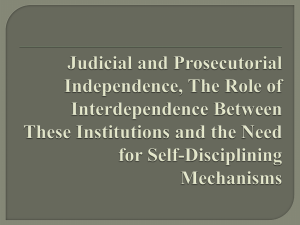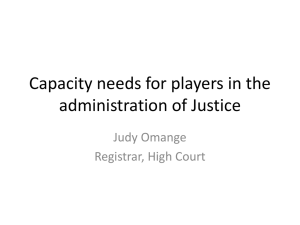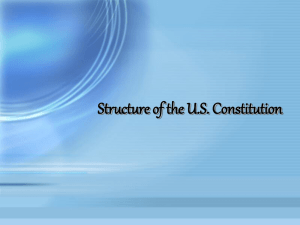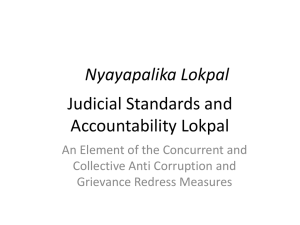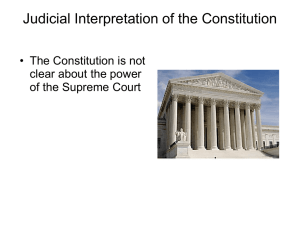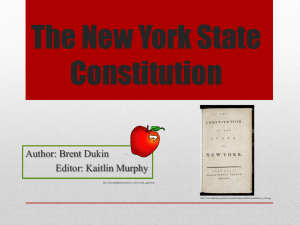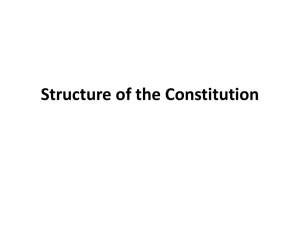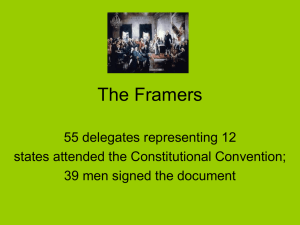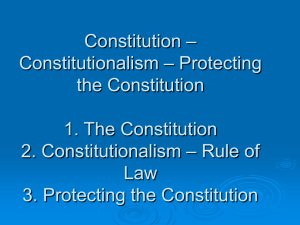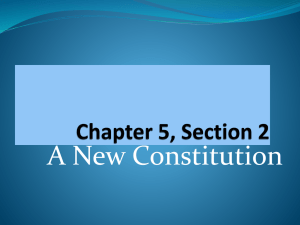session`s power point
advertisement
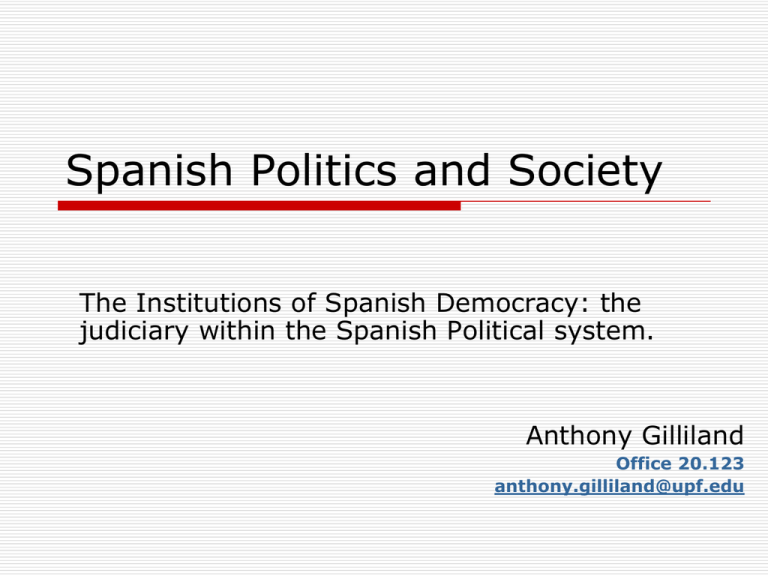
Spanish Politics and Society The Institutions of Spanish Democracy: the judiciary within the Spanish Political system. Anthony Gilliland Office 20.123 anthony.gilliland@upf.edu Introduction The political system, the three branches of power. Executive (government) Legislative (parliament or cortes generales) Judiciary Contents Spain as “estado de derecho” (state of law) and the concept of separation of powers. Spain’s judicial system The politicalisation of the judiciary, or questioning the independence of Spain’s judiciary. Spain as “estado de derecho” The constitution sets Spain as a state of law. Its origins are embedded in the European tradition of codified legality, based on Roman law (as opposed to common law). It has four main characteristics: Rule of law Division of powers and the independence of the judicial power Administrative legality Guaranteed fundamental rights and freedoms Actors and functions of the judicial power The constitution describes the general principles which govern the judiciary and its organizational structure. Key bodies Constitutional tribunal (Tribunal Constitucional) Supreme court (Tribunal Superior) High courts of Justice (Tribunales Superiores de Justicia) Attorney general (Ministerio Fiscal) Ombudsperson (Defensor del Pueblo) General Council of the Judiciary (Consejo General del Poder Judicial) as its regulatory body. Ley organica del poder judicial (LOPJ) 1985 The constitutional tribunal Supreme interpreter of constitutionality in Spain. Effectively above the traditional powers of state (exec, leg and judicial). Independent of all other constitutional bodies, and is subject only to the constitution. Authority is across state and no right to appeal its decisions. By constitution: Composed of 12 members of “recognised standing” with at least 15 years of professional legal experience. 8 Members are elected by the Cortes, 2 by the government 2 and 2 by the CGPJ. Appointed for 9 year terms with a third renewed every 3 years. Members are debarred form holding any other representative office or public post or form undertaking any other professional or commercial activity. The Supreme Court Originates in the 1812 Cadiz Constitution and is the only centralised judicial body. It is the court of last resort, it can deal with all matters except constitutional matters. The Constitutional Tribunal deals with matters affecting the Constitution so given the “rights and liberties” set out in the Constitution, it often seems to act as court of last resort. For political reasons there is less controversy surrounding this court than the Constitutional court or the CGPJ. High Courts of Justice Envisaged in the constitution but not created until 1989. Provide a structure of separation of powers at regional level mirroring the one at state level. They are charged with specific tasks including hearing of appeals against laws passed at regional level. But must bow to the authority of the Supreme Court and the Constitutional Tribunal. Lower ranking courts are Audiencias Provinciales. Attorney general and Ombudsperson Attorney General or public prosecutor (Fiscal General del Estado) and Ombudsperson are both mentioned in the constitution but not created by law until 1981. Attorney general: Main function is to promote adherence to the law and to defend the public interest in a manner consistent with the law. (Functions that clash with other bodies such as the CGPJ and the ombudsperson). The post is nominated and dismissed by the government, leading to accusations that it is overly dependent on government patronage in spite of the legal requirements for the attorney general to act independently and impartially. (The Attorney General is in charge of public prosecution). … Ombudsperson: Appointed for a period of 5 years by the Cortes to supervise the activities of the administration and investigate citizens complaints against abuses of their rights. Considerable overlap between ombudsperson and attorney general roles has made it a relatively unimportant institution. Exacerbated by insufficient resources that undermine its capability as guardian of citizens’ interests. General Council of the Judiciary (Consejo General del Poder Judicial) Envisaged by the constitution but set up and regulated by organic law. Body that regulates the judicial power, breaking away from the links of the judicial power with the Ministry of Justice to ensure independence from executive control. It is made up of a president (who also acts as the president of the supreme court) and 20 other members, all appointed by the King but proposed by Parliament by a 2/3rds majority. Its functions are wide-ranging, from choosing the president of the supreme court to the management and administration of the judicial system: selection of judges and magistrates, promotions, disciplinary action… Is the Judiciary really independent in Spain? The judiciary under fire… One of the critical issues during the transition and the setting up of Spain's democracy was the independence of the Judiciary. Constitution sets it out as such. It has an independent regulatory body. However, the very mechanisms of ensuring that the judicial power emanates from the people lends itself to political interference in the judicial system. The Constitutional Tribunal under fire The Ombudsperson under fire The CGPJ under fire Made up of 20 members of recognised standing. Despite its important role and need to be independent: 1985 Act established that all are elected or proposed by parliament, compromising independence. During PSOE governments with absolute majority in parliament meant that it as the executive rather than the legislative that elected its members, leading to accusations of pro government bias. After that, a quota system informally introduced between the main parties with parliamentary representation. What does this mean? The CGPJ under fire How does this affect independence? Effect on judges (the need to gain confidence of political parties for promotion). Additional concerns: Concern over its budget allocation. Leading to accusations of the judicial system being under resourced and prone to political manipulation. An optimistic point: the judiciary and corruption The judiciary has been praised for its fight against corruption: Case of Deputy Prime Minister Alfonso Guerra. Party finance and the case of Carlos Navarro and Jose Maria Sala. Imprisonment of Bank of Spain Governor and case of Luis Roldan. To note: the cases gained momentum in the latter years of the PSOE government as its parliamentary majority disappeared, is this coincidence? Recent cases of corruption also demonstrate the judiciary acting independently and consolidating the “state of law”, or is there a correlation between corruption cases… Conclusions
